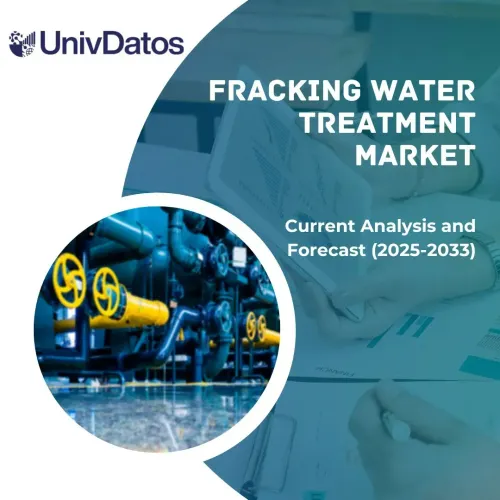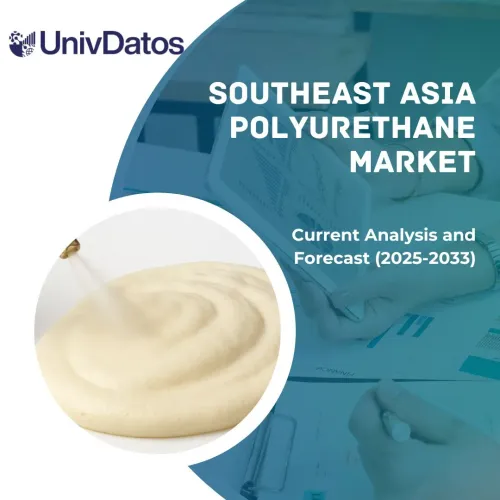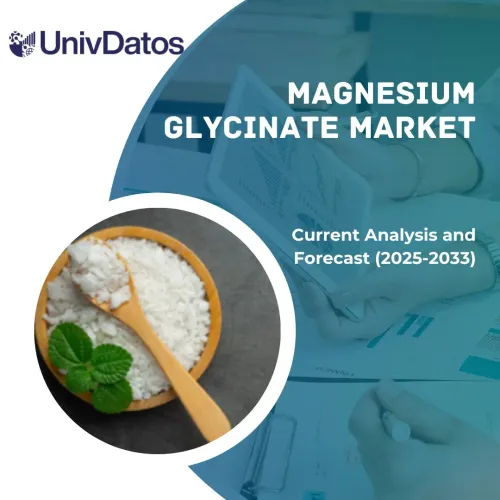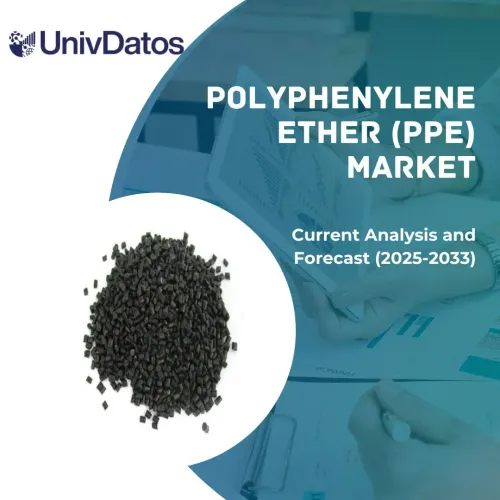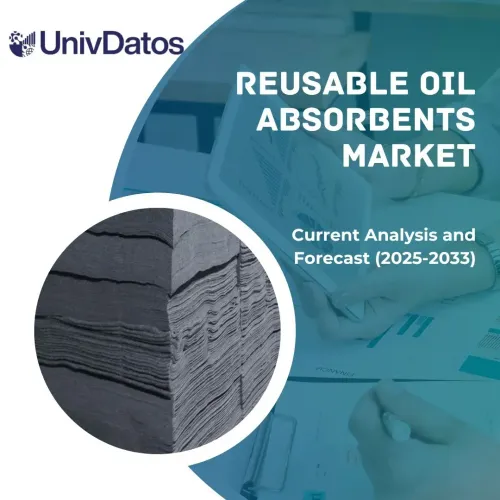- Home
- About Us
- Industry
- Services
- Reading
- Contact Us
Hyperelastic Material Market: Current Analysis and Forecast (2022-2028)
Emphasis on Type (Ethylene Vinyl Acetate, Thermoplastic Polyurethane, Butadiene Rubber, Silicon, and Others); Application (Home Bedding, Aerospace, Construction, Railway, Automobile, Oil & Gas, and Others); and Region/Country
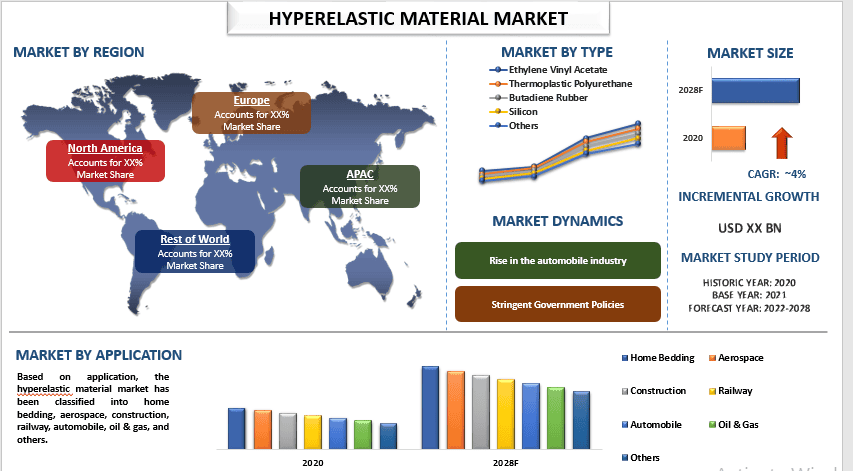
Global Hyperelastic Material Market is expected to grow at a significant rate of around 4% during the forecast period. Hyperelastic material or green elastic material is a type of constitutive model for ideally elastic material for which the stress-strain relationship derives from a strain energy density function. The hyperelastic material is a special case of a Cauchy elastic material. In addition, hyperelastic materials exhibit highly nonlinear stress-strain relationships. When tension is applied, the material softens and hardens again, but when pressure is applied, the hyperelastic material becomes very stiff. For example, Mooney-Rivlin rubber can be used extensively to manufacture complex-shaped components. The high deformability and ability to absorb vibrations, as well as the low cost-to-weight ratio, provide growth opportunities for market players.
ExxonMobil Corporation, The Dow Chemical Company, LG Chem, Sumitomo Chemical Co. Ltd., Braskem, REPSOL S.A., CLARIANT AG, LyondellBasell Industries Holdings B.V., Mitsui Chemicals America Inc., and BASF SE are some of the key players in the market. Several M&As along with partnerships have been undertaken by these players to facilitate customers with hi-tech and innovative products/technologies.
Insights Presented in the Report
“Amongst type, butadiene rubber category is expected to witness the highest CAGR during the forecast period”
Based on type, the market is segmented into ethylene vinyl acetate, thermoplastic polyurethane, butadiene rubber, silicon, and others. The butadiene rubber category is expected to witness the highest CAGR during the forecast period owing to its use to manufacture products such as tires, scrap tubes, adhesives, roll covers, hoses, gaskets, etc. Additionally, the demand for butadiene rubber is high worldwide. Also, butadiene rubber exhibits high elasticity, excellent tensile strength, tear resistance, and excellent flex properties at low temperatures, making it ideal for a wide variety of applications.
“Amongst application, the automobile category is expected to witness significant adoption of hyperelastic material during the forecast period”
Based on application, the hyperelastic material market has been classified into home bedding, aerospace, construction, railway, automobile, oil & gas, and others. The automobile category is likely to witness significant adoption of hyperelastic material during the forecast period. This is mainly because of the high level of flexibility required under heavy loads for long periods of time. Also, hyperelastic properties help define foam behavior, while viscoelastic properties are used to assess the effects of shear stress within the deformable body of an automobile seat. Furthermore, the manufacturing of high-quality tires with different characteristics such as low rolling resistance and excellent heat resistance is increasing the demand for hyperelastic material in the automobile industry.
“APAC held a significant share in the market”
APAC is anticipated to grow at a substantial CAGR during the forecast period. This is mainly due to the increasing demand for the automobile coupled with the growing disposable income, urbanization, and surging per capita spending of individuals in the emerging economies of the region is driving the growth of the market. Moreover, the wide expanse of applications along with growth in the construction, railway, automobile, oil & gas sector is further expected to support the market growth. In addition, the constant development of the industries along with growth in consumption further accelerates the hyperelastic material market growth in the region. Also, major players in the market continue to invest in various types of hyperelastic manufacturing. For instance, WACKER acquires a 60 percent stake in specialty silane manufacturer SICO Performance Material Company to further expand the share of high-margin specialties in our silicone business worldwide.
Reasons to buy this report:
- The study includes market sizing and forecasting analysis validated by authenticated key industry experts.
- The report presents a quick review of overall industry performance at one glance.
- The report covers an in-depth analysis of prominent industry peers with a primary focus on key business financials, product portfolio, expansion strategies, and recent developments.
- Detailed examination of drivers, restraints, key trends, and opportunities prevailing in the industry.
- The study comprehensively covers the market across different segments.
- Deep dive regional level analysis of the industry.
Customization Options:
The global hyperelastic material market can further be customized as per the requirement or any other market segment. Besides this, UMI understands that you may have your own business needs, hence feel free to connect with us to get a report that completely suits your requirements.
Table of Content
Research Methodology for the Hyperelastic Material Market Analysis (2022-2028)
Analyzing the historical market, estimating the current market, and forecasting the future market of the global hyperelastic material market were the three major steps undertaken to create and analyze the adoption of hyperelastic material in major regions globally. Exhaustive secondary research was conducted to collect the historical market numbers and estimate the current market size. Secondly, to validate these insights, numerous findings and assumptions were taken into consideration. Moreover, exhaustive primary interviews were also conducted, with industry experts across the value chain of the global hyperelastic material market. Post assumption and validation of market numbers through primary interviews, we employed a top-down/bottom-up approach to forecasting the complete market size. Thereafter, market breakdown and data triangulation methods were adopted to estimate and analyze the market size of segments and sub-segments of the industry pertains to. Detailed methodology is explained below:
Analysis of Historical Market Size
Step 1: In-Depth Study of Secondary Sources:
Detail secondary study was conducted to obtain the historical market size of the hyperelastic material market through company internal sources such as annual reports & financial statements, performance presentations, press releases, etc., and external sources including journals, news & articles, government publications, competitor publications, sector reports, third-party database, and other credible publications.
Step 2: Market Segmentation:
After obtaining the historical market size of the hyperelastic material market, we conducted a detailed secondary analysis to gather historical market insights and share for different segments & sub-segments for major regions. Major segments are included in the report as type and application. Further country-level analyses were conducted to evaluate the overall adoption of testing models in that region.
Step 3: Factor Analysis:
After acquiring the historical market size of different segments and sub-segments, we conducted a detailed factor analysis to estimate the current market size of the hyperelastic material market. Further, we conducted factor analysis using dependent and independent variables such as various type and applications of hyperelastic material. A thorough analysis was conducted for demand and supply-side scenarios considering top partnerships, mergers and acquisitions, business expansion, and product launches in the hyperelastic material market sector across the globe.
Current Market Size Estimate & Forecast
Current Market Sizing: Based on actionable insights from the above 3 steps, we arrived at the current market size, key players in the global hyperelastic material market, and market shares of the segments. All the required percentage shares split, and market breakdowns were determined using the above-mentioned secondary approach and were verified through primary interviews.
Estimation & Forecasting: For market estimation and forecast, weights were assigned to different factors including drivers & trends, restraints, and opportunities available for the stakeholders. After analyzing these factors, relevant forecasting techniques i.e., the top-down/bottom-up approach were applied to arrive at the market forecast for 2028 for different segments and sub-segments across the major markets globally. The research methodology adopted to estimate the market size encompasses:
- The industry’s market size, in terms of revenue (USD) and the adoption rate of the hyperelastic material market across the major markets domestically
- All percentage shares, splits, and breakdowns of market segments and sub-segments
- Key players in the global hyperelastic material market in terms of products offered. Also, the growth strategies adopted by these players to compete in the fast-growing market
Market Size and Share Validation
Primary Research: In-depth interviews were conducted with the Key Opinion Leaders (KOLs) including Top Level Executives (CXO/VPs, Sales Head, Marketing Head, Operational Head, Regional Head, Country Head, etc.) across major regions. Primary research findings were then summarized, and statistical analysis was performed to prove the stated hypothesis. Inputs from primary research were consolidated with secondary findings, hence turning information into actionable insights.
Split of Primary Participants in Different Regions
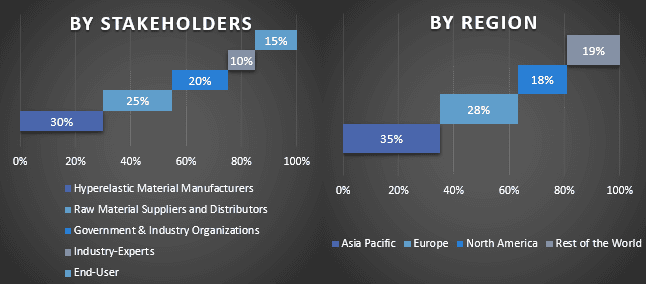
Market Engineering
The data triangulation technique was employed to complete the overall market estimation and to arrive at precise statistical numbers for each segment and sub-segment of the global hyperelastic material market. Data was split into several segments & sub-segments post studying various parameters and trends in the areas of type and application in the global hyperelastic material market.
The main objective of the Global Hyperelastic Material Market Study
The current & future market trends of the global hyperelastic material market were pinpointed in the study. Investors can gain strategic insights to base their discretion for investments on the qualitative and quantitative analysis performed in the study. Current and future market trends determined the overall attractiveness of the market at a regional level, providing a platform for the industrial participant to exploit the untapped market to benefit from a first-mover advantage. Other quantitative goals of the studies include:
- Analyze the current and forecast market size of the hyperelastic material market in terms of value (USD). Also, analyze the current and forecast market size of different segments and sub-segments
- Segments in the study include areas of type and application.
- Define and analysis of the regulatory framework for the hyperelastic material
- Analyze the value chain involved with the presence of various intermediaries, along with analyzing customer and competitor behaviors of the industry.
- Analyze the current and forecast market size of the hyperelastic material market for the major region.
- Major countries of regions studied in the report include Asia Pacific, Europe, North America, and the Rest of the World.
- Company profiles of the hyperelastic material market and the growth strategies adopted by the market players to sustain in the fast-growing market
- Deep dive regional level analysis of the industry
Related Reports
Customers who bought this item also bought




